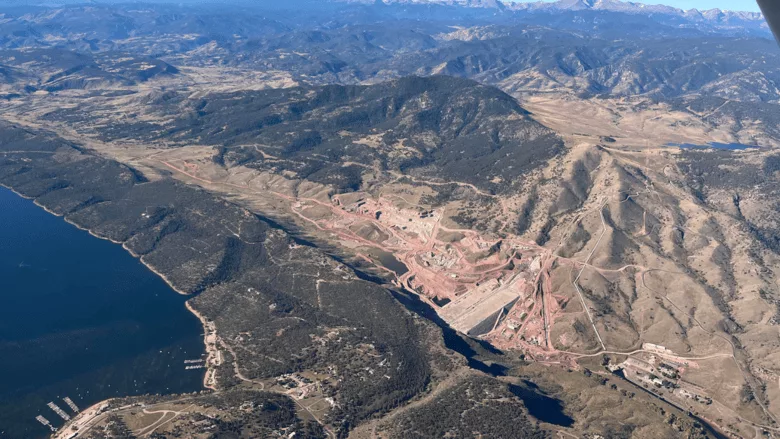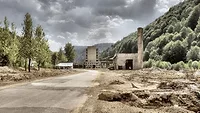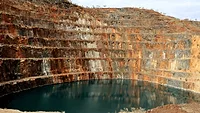Uranium Discovered at Colorado’s Chimney Hollow Dam
Northern Water Officials Say There’s No Cause for Alarm

Image courtesy of Northern Water
Just weeks from completion, a massive infrastructure project decades in the making has hit a surprising twist. Northern Water, the agency behind the Chimney Hollow Reservoir in northern Colorado, has confirmed the presence of uranium at the construction site—specifically, in the very rocks used to build the dam. Yes, uranium. The same element many people immediately associate with nuclear power or weapons.
“We were using rocks that were quarried on-site,” Jeff Stahla, spokesperson for Northern Water, explained. “As we were building this dam, we discovered some of those rocks contain trace amounts of naturally occurring uranium.”
This discovery comes as the $500 million Chimney Hollow project nears the finish line. Once operational, it’s expected to serve over one million residents along Colorado’s Front Range and will be the largest dam built in the U.S. in more than two decades.
The project: The Chimney Hollow Reservoir Project is a team effort between 12 water providers from Northeastern Colorado, all working together to make the Windy Gap Project more reliable. The new reservoir will be built just west of Carter Lake in Larimer County and will hold about 90,000 acre-feet of water. That’s enough to deliver a steady 30,000 acre-feet each year to help meet future water needs. Construction kicked off back in August 2021.
- One important thing to know—this project isn’t taking water away from farms or other users. It’s using water rights already tied to the Windy Gap Project, which has been delivering water since 1985. The new reservoir simply adds the storage capacity we’ve needed for a long time to make sure that supply is more consistent and dependable.
- Chimney Hollow is actually the centerpiece of what’s called the Windy Gap Firming Project. It went through a thorough review process under the National Environmental Policy Act (NEPA), along with state and local approvals. After a lot of coordination and negotiation, the project includes solid plans to protect fish, wildlife, and the environment—making sure we’re balancing progress with preservation.
According to CBS News Colorado, uranium was first detected in late 2024, but it wasn’t immediately clear where it was coming from. After some digging—literally and figuratively—Northern Water confirmed the source: the same rock being mined from within the reservoir site itself.
Back in 2024, CBS reporter Dillon Thomas visited the construction zone, where trucks were hauling over 62,000 tons of rock each day to build the 350-foot-tall dam. Now, much of that rock is embedded in the structure that will soon hold back billions of gallons of water.
Northern Water is currently working with the Environmental Protection Agency (EPA) to monitor and assess the uranium levels. They’ve emphasized that they’re being proactive and transparent with the community.
“We are looking to be finished with construction in the next six weeks,” Stahla said. “As we started to consider filling the reservoir, we wanted to make sure the public was aware of some of the conditions we found and that we are going to address them.”
Importantly, Stahla emphasized that the discovery of uranium doesn’t pose a risk in the way people might imagine.
“The concern about uranium is not about radioactivity or things people often associate with uranium,” he said. “But, it is from the standard of long-term ingestion.”
That means the worry isn’t about standing near the dam—it’s about ensuring the drinking water sourced from the reservoir remains safe. And for now, the project isn’t being delayed.
Northern Water is considering several options to address the issue. One is treating the reservoir water as it’s initially filled. Another? Letting nature take its course.
“There is a strong possibility that these mineral levels will decrease far below the standards set by the EPA,” Stahla said, citing the dilution power of the vast reservoir and the natural cycling of water over time.
As of now, the plan is still to begin filling the reservoir in August. Northern Water says they’ll continue to monitor uranium levels closely, working with health and environmental agencies to ensure the safety of the water supply.
So while the uranium discovery may sound alarming at first glance, officials are confident that the long-awaited Chimney Hollow Reservoir will soon begin serving Colorado—with safe, clean water flowing from its depths.
Looking for a reprint of this article?
From high-res PDFs to custom plaques, order your copy today!








